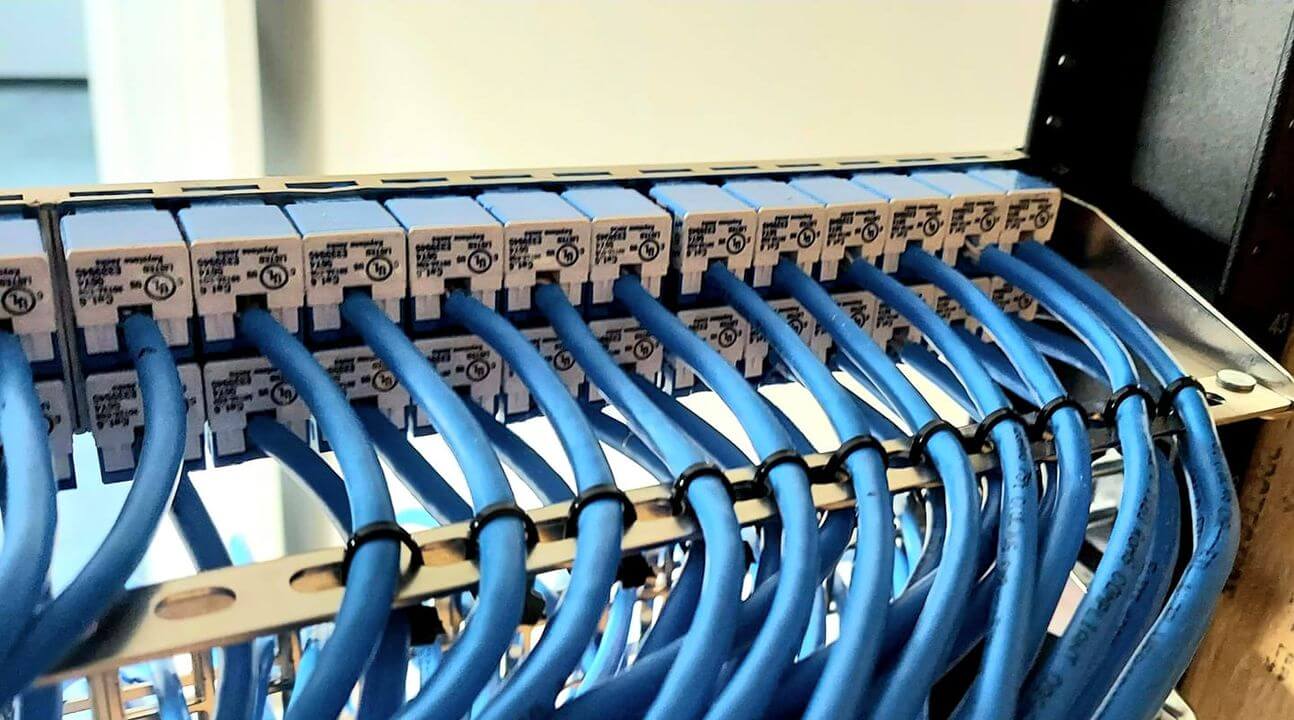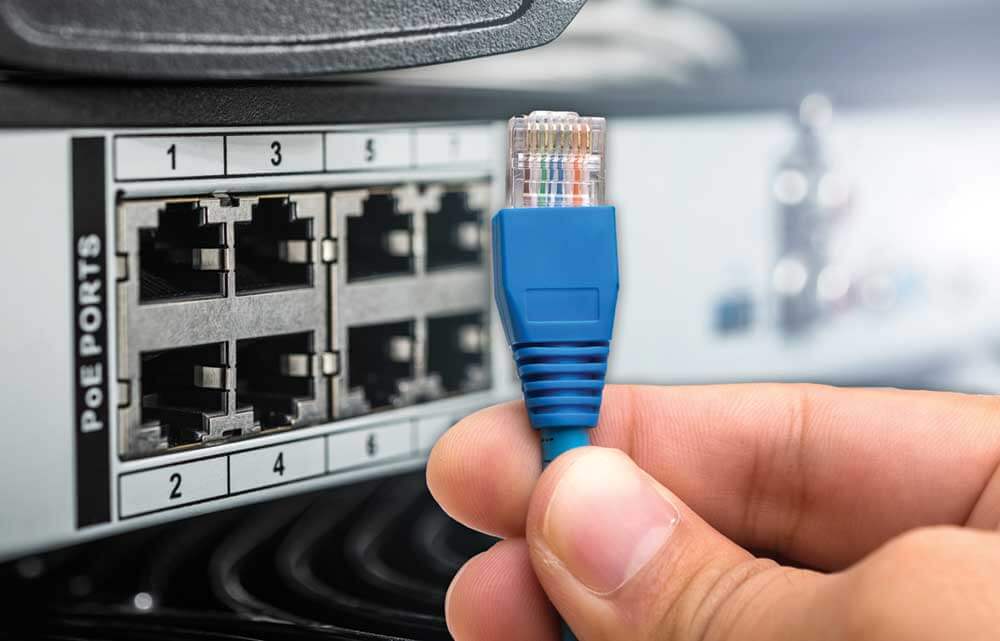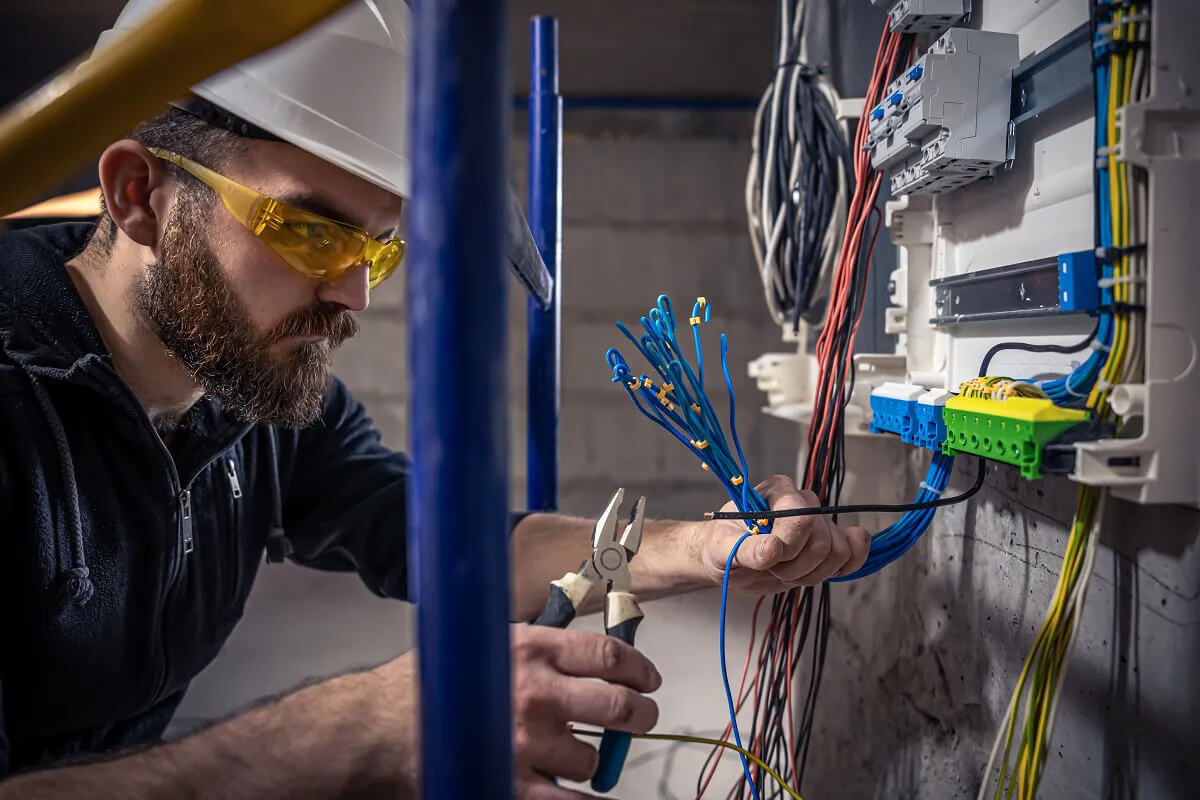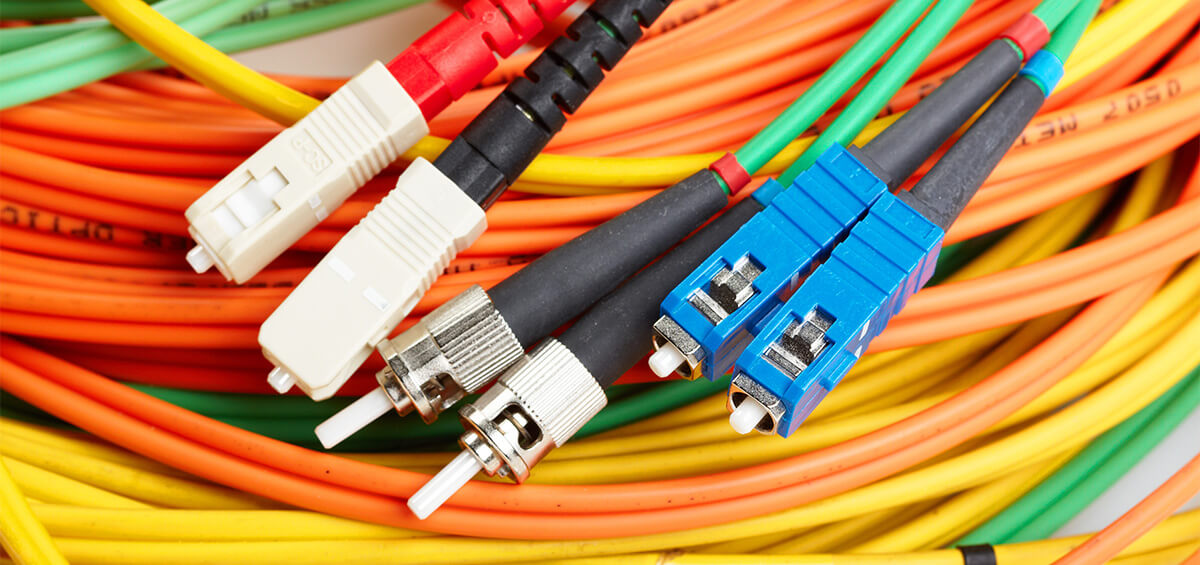In today’s connected world, a reliable network infrastructure is no longer a luxury – it’s essential. Whether you’re running a busy office in Los Angeles or setting up a modern home workspace, seamless connectivity ensures productivity, security, and peace of mind. Poorly installed networks can lead to frequent downtime, slow data transfer, and even security vulnerabilities, affecting both daily operations and long-term growth.
Many businesses and homeowners, looking to save costs, attempt DIY office network cabling or implement their own data cabling solutions. While this may seem simple, DIY installations often result in tangled cables, inconsistent performance, and systems that are difficult to maintain or expand.
This is where professional wiring services make a real difference. Hiring a certified and experienced installer ensures your network is designed for optimal performance, scalable for future growth, and fully compliant with safety and building codes. Proper structured cabling also simplifies troubleshooting and reduces long-term maintenance costs, delivering both efficiency and peace of mind.
In this article, we compare DIY approaches with professional structured cabling installations, highlighting the key advantages – from enhanced performance and reliability to future-proof scalability. By the end, you’ll understand why entrusting your network to experts is a smart investment for any home or office.
What is Structured Cabling?
Structured cabling is a standardized method for designing and installing the cabling infrastructure that supports data, voice, and video systems. Unlike ad-hoc or DIY setups, structured cabling follows clear standards, ensuring consistent performance, easy management, and future scalability.
A structured cabling system typically includes:
- Patch panels – central hubs that organize and connect network cables.
- Horizontal cabling – runs from patch panels to outlets or workstations.
- Backbone cabling – connects floors, buildings, or main equipment rooms.
- Outlets and connectors – points of access for devices, ensuring clean and reliable connections.
Implementing structured cabling provides clear advantages over DIY installations. While DIY may seem cost-effective initially, it often results in tangled cables, poor organization, signal interference, and difficulties when adding new devices or troubleshooting issues. Professional data cabling solutions provide a clean, organized, and easily maintainable infrastructure.
According to BICSI Structured Cabling Standards, properly designed cabling can improve network uptime by up to 30% compared to unplanned installations. Standardized cabling also reduces installation errors and simplifies future upgrades (TIA/EIA). The structured cabling benefits include reliable connectivity, optimized signal integrity, compliance with safety standards, and the ability to expand without major rewiring – crucial for modern offices and smart homes alike.
DIY Office Network Cabling: Common Pitfalls
Many small business owners and homeowners in Los Angeles are tempted to handle office network cabling themselves. DIY seems cost-effective, offers the satisfaction of completing the work independently, and looks straightforward – until issues arise.
The main risks of DIY installations include:
- Signal loss and interference from poorly twisted pairs or unshielded cables.
- Safety hazards due to lack of compliance with NEC and local codes.
- Scalability problems, making it difficult to add devices or expand networks.
Case Example 1: A small accounting firm attempted a DIY network installation. Within weeks, employees faced frequent disconnects, slow file transfers, and network outages. After hiring a professional team, the network was reorganized, cables properly routed, and compliance ensured – resolving the issues at a cost lower than repeated DIY fixes.
Case Example 2: A home office initially “worked” but quickly became unstable when adding cameras and additional workstations. Without professional planning, scalability was impossible without a complete reinstallation.
DIY office network cabling may save money upfront, but the long-term impact on performance, reliability, and future growth can be significant. Professional installation mitigates these risks and ensures a network that is safe, organized, and ready to expand.
Benefits of Professional Structured Cabling
Hiring experts for professional wiring delivers clear advantages:
- Reliability and Performance
Professionally installed networks ensure high signal integrity and minimal downtime. Proper cable types, routing, and terminations prevent interference and maintain consistent speeds. Unlike DIY setups, professional cabling provides a stable, high-performing network employees can rely on every day.
- Compliance and Safety
Professional structured cabling follows NEC standards and local building codes. Certified technicians implement proper grounding, fire-rated cable routing, and separation from high-voltage lines, reducing hazards and inspection issues. This protects both equipment and people while minimizing business liability.
- Scalability and Future-Proofing
Structured cabling is designed with growth in mind. Adding new devices, workstations, or network segments is straightforward, while DIY systems often limit future upgrades and increase costs.
- Warranties and Documentation
Professional teams provide as-built diagrams, post-installation testing, and warranties on materials and labor. This documentation simplifies troubleshooting, maintenance, and expansions, ensuring long-term reliability.
DIY vs Professional Structured Cabling: Key Differences
| Feature | DIY Cabling | Professional Structured Cabling |
| Signal Reliability | Low / Intermittent | High / Stable |
| Code Compliance | Often Missing | Full Compliance (NEC, Local) |
| Scalability | Limited | Easy to Upgrade |
| Warranty & Support | None | Materials & Labor Warranty |
| Performance Monitoring | Rare | Post-installation Testing |
The table illustrates why professional cabling services are a smart investment. Beyond connectivity, structured cabling ensures optimal office network cabling, compliance, and long-term reliability – core structured cabling benefits that DIY cannot match.
Cost Analysis: DIY vs Professional
DIY may appear cheaper upfront but often leads to hidden costs:
- Network downtime affecting productivity
- Frequent troubleshooting and repairs
- Equipment replacement due to interference
- Difficulty upgrading or expanding the network
Certified technicians offering data cabling solutions reduce these risks. According to AmorServ and Revelation AV, professional structured cabling can save up to 30% on maintenance and upgrades over five years compared to DIY.
| Component | DIY Cabling | Professional Wiring |
| Initial Installation | $500–$1,000 | $1,500–$3,000 |
| Maintenance & Repairs | $600–$1,200 | $200–$400 |
| Downtime Costs | $500–$1,000 | $100–$200 |
| Upgrades / Expansion | $400–$800 | $150–$300 |
| 5-Year Total Cost | $2,000–$4,000 | $2,150–$3,900 |
Investing in professional office network cabling and structured data cabling solutions ensures reliable connectivity, scalability, and long-term financial efficiency.
Professional wiring for your office network cabling provides reliability, performance, compliance, and long-term savings that DIY installations cannot match. Structured cabling ensures minimal downtime, simplified troubleshooting, and easy upgrades – essential for both commercial and residential setups.
If you want a high-performing, scalable network, contact local professional cabling services today. Schedule an audit, request a quote, or explore customized data cabling solutions to transform your office or home network.
FAQ
1. What is the difference between DIY and professional structured cabling?
DIY cabling is often a short-term, low-cost approach where office network cabling is installed without planning or adherence to standards. Professional wiring follows structured cabling standards, ensuring reliable performance, scalability, and compliance with NEC and local codes.
2. How much does professional office network cabling cost?
The cost of professional office network cabling depends on office size, cable type, and complexity. While initial costs may be higher than DIY, professional installation reduces downtime, troubleshooting, and future upgrade expenses, providing long-term savings.
3. Can DIY cabling handle large office networks?
DIY solutions rarely scale well for large or complex networks. Improper layout, interference, and lack of documentation can cause slow speeds and network instability. Professional cabling services ensure that even large networks perform reliably and remain easy to expand.
4. What are the risks of improper data cabling solutions?
Improper data cabling solutions can lead to signal loss, downtime, security vulnerabilities, code violations, and costly rework. Hiring a certified technician or licensed contractor mitigates these risks, delivering safe, compliant, and high-performing office network cabling.
5. Why should I choose professional wiring over DIY?
Professional wiring ensures organized cabling, reliable connectivity, compliance with standards, and easy scalability. It minimizes maintenance costs and provides warranties, making it a safer and more cost-effective choice than DIY installations.









